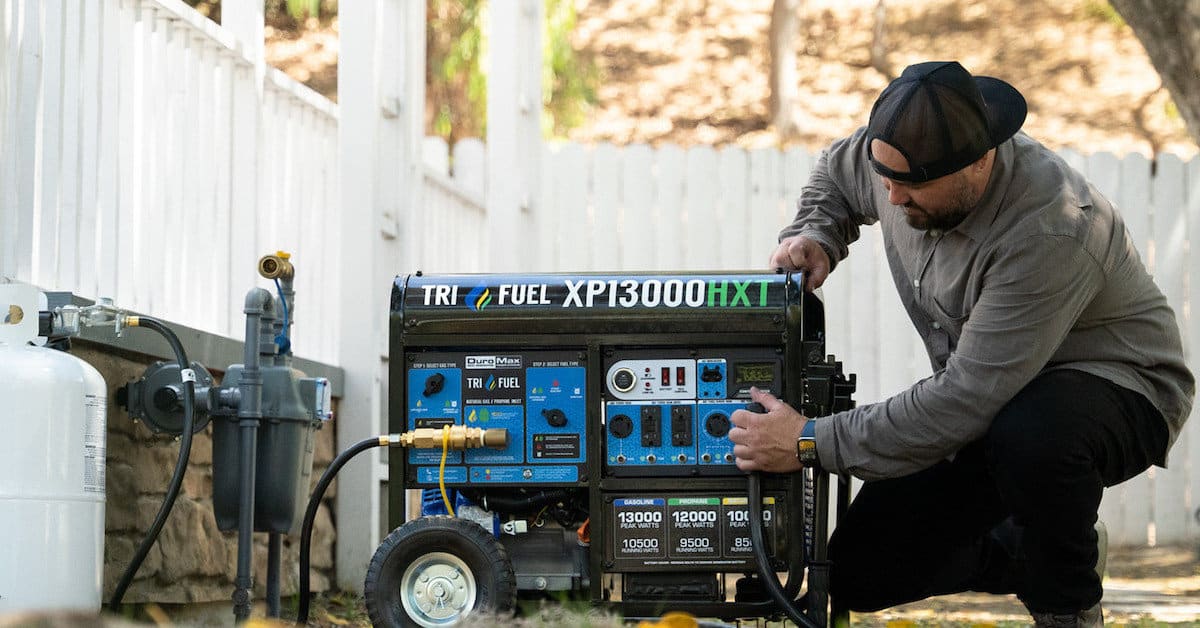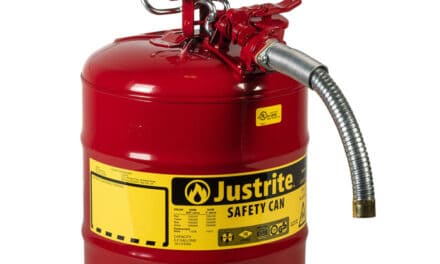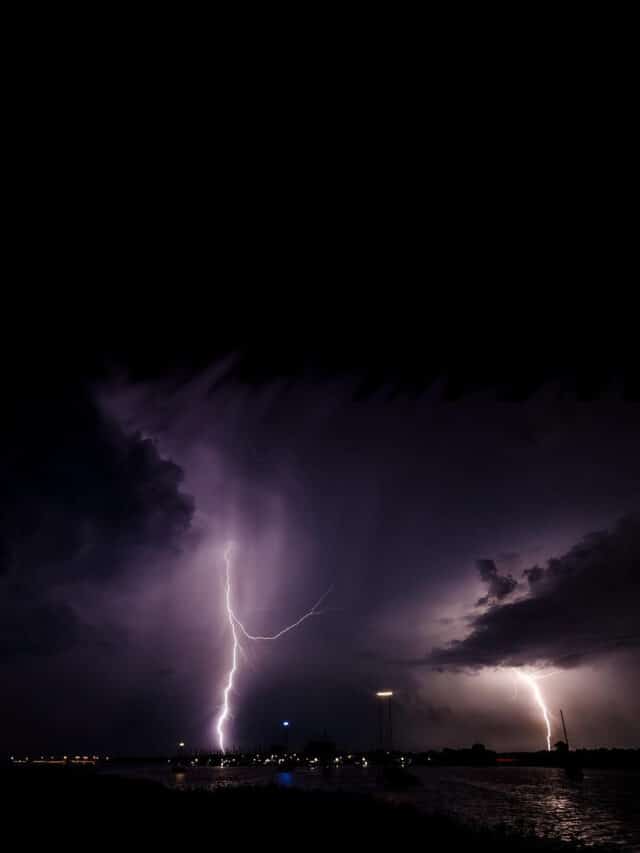DuroMax 13000 Watt Tri Fuel Generators run on Propane (black hose), Natural Gas, or Gasoline. The heavy black cord connects to a manual transfer switch that balances the load for a safe, easy connection between the generator and the house.
Portable Generator Easily Switches from Gasoline to Propane to Natural Gas
In 2011, a great grandmother using an oxygen machine died during a power outage caused by a snowstorm. After responding to the extreme weather event, the Federal Emergency Management Agency news release suggested that homeowners should consider the purchase of a portable backup generator.
FEMA Recommends a Generator for Home Backup
For a long time, most portable generators ran on gasoline and nothing else. DIY kits allowed the use of propane as a fuel, but the kits voided the manufacturer’s warranty. When gasoline is scarce—often the case after a natural disaster—it doesn’t take long for the generator to sit silent without fuel.
Enter the dual-fuel generator. It could run on gasoline or propane. No gasoline? Just connect the tank from your BBQ grill and you’re running again. Great. However, more powerful generators use more fuel and the 20-pound propane tank from your local convenience mart, home center, or grocery store won’t run a large generator for very long. Larger tanks are available, but you’ll have to refill them at the local propane depot. The more a tank holds, the more it weighs.
How to Use a Generator During a Power Outage
Following their introduction, dual fuel generators became the best-selling type of portable with growing popularity among homeowners, RV owners, and camping enthusiasts.
A tri fuel generator adds natural gas to the fuel choices and makes it possible to run a generator for days or weeks without refueling.
Tri Fuel Generator
A Tri Fuel Generator can run on any of three fuels—gasoline, propane, or natural gas. The most obvious benefit is the choice of fuel to suit the situation.
Natural gas offers an almost endless supply of fuel. A plumber will install a connection outside the home with a shut-off valve. Once connected, the generator can run for days without refueling. The only reason to shut down is maintenance. Generators, especially home portables, require daily oil checks.
Best Portable Generator for Home Use
Portable propane tanks range in size from 20-pounds to 100-pounds. The weight refers to how much propane the tank will hold. Under pressure, propane becomes a liquid (liquid propane, or LP) and must evaporate before use in an engine, gas range, or furnace. To allow for evaporation, propane companies only fill tanks to about 80 percent full. Propane is a great fuel until it gets very cold. Below -44 degrees Fahrenheit, it will no longer evaporate.
Gasoline provides the most energy of all three fuels, but it has drawbacks. It’s volatile and most municipalities limit storage to approved containers in quantities of 25 gallons or less. It also ages quickly, especially ethanol mixes, and can leave a gummy residue in carburetors and fuel lines. Stabilizers extend gasoline shelf storage times, but not indefinitely.
Tri Fuel Generator Fuel Choices
Natural Gas, Propane (LP), and Gasoline have their pros and cons. All three are readily available, with some limitations. They have different energy densities that change generator performance and capacity.
Among common fuels, the energy density of gasoline is second only to diesel. Transfer from a 5-gallon storage container to a generator fuel tank requires lifting about 35 pounds and supporting it while pouring. Spills are possible and its volatile nature could cause a flash fire if spilled on a hot surface. As already mentioned, shelf life is short, and its deterioration can cause mechanical problems. However, for the most power from a tri fuel generator, gasoline is the fuel of choice.
How to Prepare for a Power Outage
Propane’s energy density is below that of gasoline. The smallest practical tank for a generator, a 20-pound tank, holds 16 pounds of propane to leave room for evaporation. Multiply the tank’s maximum capacity in pounds by 0.80 for the maximum fuel weight. 20-pound tanks are widely available at gas stations, grocery stores, home centers, and hardware stores, but will only power a large generator for a short time. Larger tanks up to 100 pounds are available at propane dealers. Propane stores easily and has a very long shelf life.
Natural gas comes in last in terms of energy density and a generator’s rated capacity reflects the difference on while running natural gas reflects. If available, natural gas has no transportation or storage concerns. It eliminates refueling and could potentially power a generator for weeks or even months. Like propane, it doesn’t age.
Compare Power Capacity Using Different Fuels
Champion 8000 Watt Tri Fuel Generator with Electric Start and CO Detection/Shutdown
Fuel Type |
Running Watts |
Starting Watts |
|
Gasoline |
8000 Watts |
10000 Watts |
|
Propane |
7250 Watts |
9025 Watts |
|
Natural Gas |
7000 Watts |
8750 Watts |
DuroMax 10500 Watt Generator with Remote Electric Start and CO Alert/Shutdown
Fuel Type |
Running Watts |
Starting Watts |
|
Gasoline |
10500 Watts |
13000 Watts |
|
Propane |
9500 Watts |
12000 Watts |
|
Natural Gas |
8500 Watts |
10000 Watts |

Is a Tri Fuel Generator Right for You?
With a Tri Fuel Generator, fuel choice depends on the required power and on fuel availability. Most propane dealers aren’t open 24/4. If you go out to buy fuel in the middle of the night, 20-pound propane tanks and 5-gallon gasoline cans are the only available choices in most places. Natural gas is widely available in towns and cities and unavailable in rural areas.
If you don’t have natural gas at your home, consider a dual fuel generator.
During times of higher power usage, such as running an air conditioner, it may make sense to run the generator on gasoline to take advantage of the higher power capacity. Later, when power use drops, switch to natural gas for the lower cost and greater availability.
The biggest drawback of gasoline is the limits placed on storage. No one wants to store multiple 5-gallons gas cans filled with gasoline. It’s too dangerous. Propane has less power, but if you buy from a propane dealer, it usually costs less than gasoline and you can fill larger tanks—up to 100 pounds (80 pounds max fill weight). The supply of natural gas is virtually endless, but the fuel has less punch than either propane or gasoline. It’s an important point to keep in mind when considering a tri fuel generator.

Generator Maintenance
The ability to run for long periods without shutting down to refuel comes with a caveat. You must perform maintenance on time, every time. A small engine’s biggest enemy is poor maintenance, especially lack of oil.
For all generators, including tri fuel generators, always check the oil before every use and top off as necessary, but don’t overfill. During use, check the oil at least once every day. It’s inconvenient, but necessary.
Backup power requires the generator to run for hours at a time. Consider that 100 hours is equivalent to just 4 days and 50 hours is 2 days. A car on the highway at 60 MPH x 50 Hours = 3000 Miles and 100 Hours = 6000 Miles—similar to running a generator at 50 percent to 75 percent full load.
Keep extra oil, oil filters, spark plugs, and spark plug filters on hand to change your oil as often as necessary and perform other required maintenance. Keep a log and write in the dates and generator total hours after performing maintenance.


















